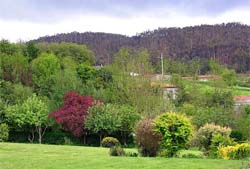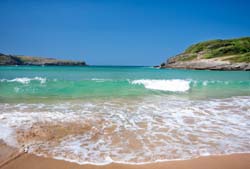Iberian Peninsular Geography
Spain is one of the most geographically diverse countries in Europe; from lush, green forests to white sandy beaches and vast, open deserts to snow-capped mountains; one side of the country to the other, Spain has everything. Attached to south-west France in the north-east and Portugal in the west, Spain is also bordered by the Mediterranean Sea and the Atlantic Ocean giving rise to its varied and attractive climate.
Northern Spain

The Northern area of Spain covers the autonomous regions of Galicia, Asturias, Cantabria, the Basque Country, Navarre, La Rioja, Aragon and Catalonia. This area is more prone to rainfall and seasons are pleasant and varied, principally in Galicia along to the Basque country where the country is bordered by the Atlantic Ocean meaning that climate and temperature relies principally on the ocean.
Due to its rainfall and warm and temperate climate, the northern regions of Spain are home to luscious areas of vegetation, vast forests and a large variety of flora and fauna, setting it apart from other areas of Spain. The regions of Asturias and Cantabria are also home to the magnificent Picos de Europa National Park, home to snow-capped mountains, breathtaking views and deep caves to explore.
Catalonia is one of the most popular tourist destinations is Spain, not only is it home to the beautiful stretch of the Costa Brava but also to the second largest city in the country, Barcelona. Culture and history play a massive part in this area with traditions and architecture unlike any other in Spain. Bordered by the Mediterranean Sea, this region enjoys a warm and temperate climate perfect for holidays on the coast though vegetation and greenery is also in abundance here.
Central Spain
Located inland away from the coast, central Spain can experience intense summers and mild winters with many open areas of dry, desert-like landscape. Central Spain is composed of the regions of Madrid, Castile and León, Extremadura and Castile-La Mancha representing a large plateau surrounded by numerous mountain ranges.
From the dense populations of Madrid to the small villages and towns scattered throughout Castile-La Mancha, central Spain is a diverse and culturally rich area combining traditional Spanish living with modern, contemporary technology.
Southern Spain

The home of paella and flamenco, southern Spain is the land of sun, sea and sand, as well as a truly unique cultural history. From the Costa del Sol to the border of Portugal, the southern coast is everything a tourist could wish for in a relaxing holiday. Travelling inland, Spain’s largest region of Andalucía is home to some of the most beautiful architecture as well as some of the countries most varied landscape. Mountains, hills and valleys lie alongside white, sandy beaches providing breath taking views wherever you are in the region.
To the east of Andalucía lies the autonomous region of Valencia, connecting the Costa Blanca and Costa del Sol. As one of the most contemporary cities in Spain, Valencia attracts tourists looking for a relaxing stay on the beach as well as those in search of culture and art. Home to the popular destination of Alicante, the south-eastern edge and southern coast of Spain welcome a subtropical climate providing perfect mild temperatures and warm sunshine all year round.









